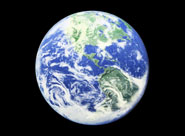Professor George Helffrich and Satoshi Kaneshima observed seismic waves which travelled through the outermost core, from earthquakes in South America and the southwestern Pacific Ocean, recorded at arrays of seismometers in Japan and northern Europe.
The speeds at which seismic waves travelled through the outer core at different depths suggest that it is not a homogenous liquid, but that the uppermost 300 kilometres or so of the core is stratified, with the portion nearest the core/mantle boundary containing up to five per cent by weight light elements.
This stratification would affect temperature gradients in the outermost core and have implications for our understanding of the thermal evolution of the core and lowermost mantle.
Paper
Outer-core compositional stratification from observed core wave speed profiles by George Helffrich and Satoshi Kaneshima in Nature.
